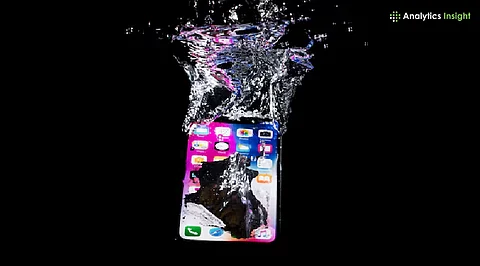

The iPhone 16 carries an IP68 rating, offering water resistance, not complete waterproofing.
Apple's warranty does not cover water damage, despite its advertised resistance.
The device can handle splashes and short submersions, but risks damage with prolonged exposure.
Smartphones today are tougher than ever. A lot of them can even handle being splashed with water. So, with the iPhone 16 out, people are wondering just how waterproof it is. It has a cool design and an IP68 rating, but it's not invincible. It's important to know what it can handle before you get it wet.
The iPhone 16 has an IP68 rating. This means it can keep out dust and water. The 6 means no dust can get in. The 8 means it can handle water. Apple says the iPhone 16 can be underwater for 30 minutes at a depth of 6 meters.
But keep in mind: this rating is from lab tests. It doesn't consider things like chlorine from pools, salt from the ocean, or water pressure. So, even with the IP68 rating, don't think of it as totally waterproof.
Also Read: Top Technologies Up for Ocean Environment Challenges
People always get waterproof and water-resistant mixed up. If something's waterproof, water can't get inside, period. Water-resistant just means it can take a little water. The iPhone 16? It's water-resistant. So, yeah, splashes, rain, and spills are fine. It might even survive a quick drop in water. But still, be careful.
Using your phone while swimming or showering a lot can cause damage over time. Moisture can mess with the inside parts. The seals that protect the phone can get weak, especially if they're always exposed to water.
Even though it has an IP68 rating, Apple doesn't cover water damage under warranty. This shows that water is still a risk, even with the protection. If water gets inside, repairs can be pricey, especially if you don't have warranty coverage.
A lot of phones have liquid contact indicators (LCIs) that change color when they get wet. So, if that little liquid contact indicator goes off, don't expect them to cover water damage under warranty. Think of the water resistance as a just in case thing, not an invitation to take your phone for a swim.
Lab tests aren't like real life. The IP68 rating? Yeah, that's from tests done in calm water. They just ease the phone in, nice and slow. But when you're actually swimming or surfing, the water's moving all over the place. That water movement puts way more pressure on the phone, and that means it's easier for water to sneak in.
Temperature matters too. Hot water from a bath can wear down the seals faster than cold water. Saltwater and chlorine are really bad because they can rust the metal and mess with the speakers and ports.
Even though the iPhone 16 is water-resistant, here's how to avoid damage:
Don't charge it right after it gets wet.
Dry it off with a soft cloth if it gets wet.
Keep it away from soap, shampoo, and cleaning stuff.
Don't push buttons or plug things in when they're still wet.
If it falls in saltwater or a pool, rinse it with fresh water and dry it.
If you do these things, you can lower the risk of water damage, even if your phone gets wet.
Lots of people think they can take underwater photos or videos with new iPhones. Some people might get away with it sometimes, but doing it a lot can cause problems. Waterproof cases are way better for this. Don't rely on the phone's built-in resistance alone.
Another myth is that water resistance gets better with each new iPhone. Newer phones might have better seals, but no iPhone is completely waterproof. It's still just resistance, not total protection.
The iPhone 16 can handle more than older models, but it still has limits. The IP68 rating is good for splashes or dropping it in water by accident. But it's not made to be underwater for long or in high-pressure places. If you take care of it and keep it away from moisture, it will last longer.
It's important to know what the marketing says and how it works in real life. Water resistance is nice, but it's not a sure thing. Being careful is still the best way to protect your phone.
